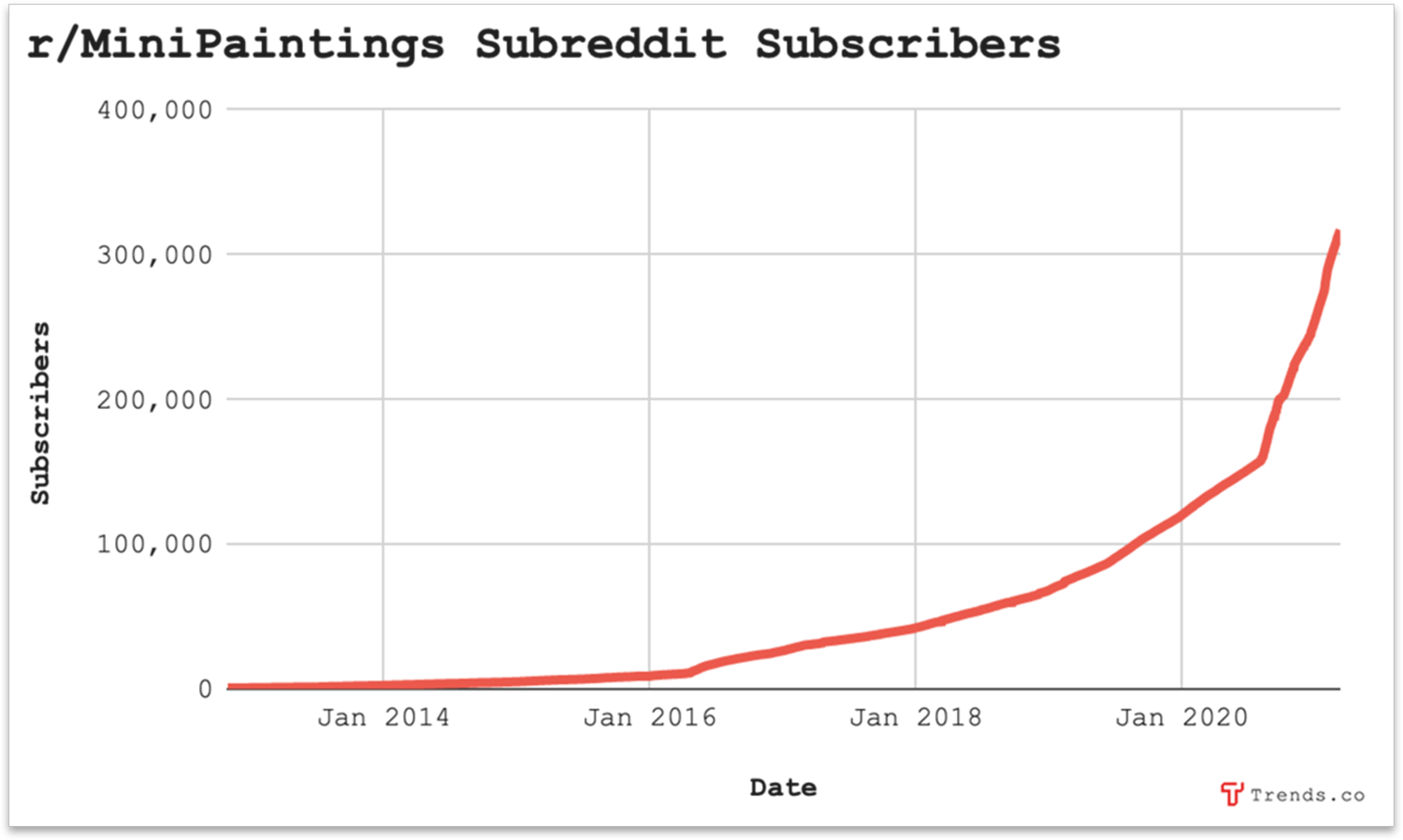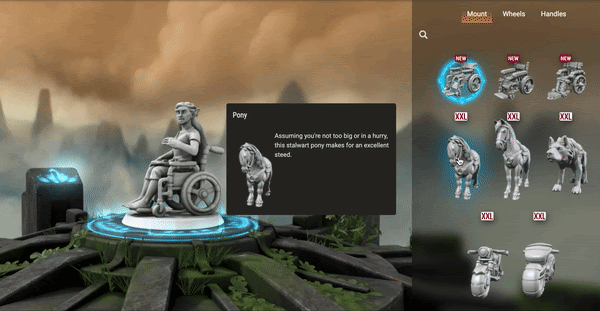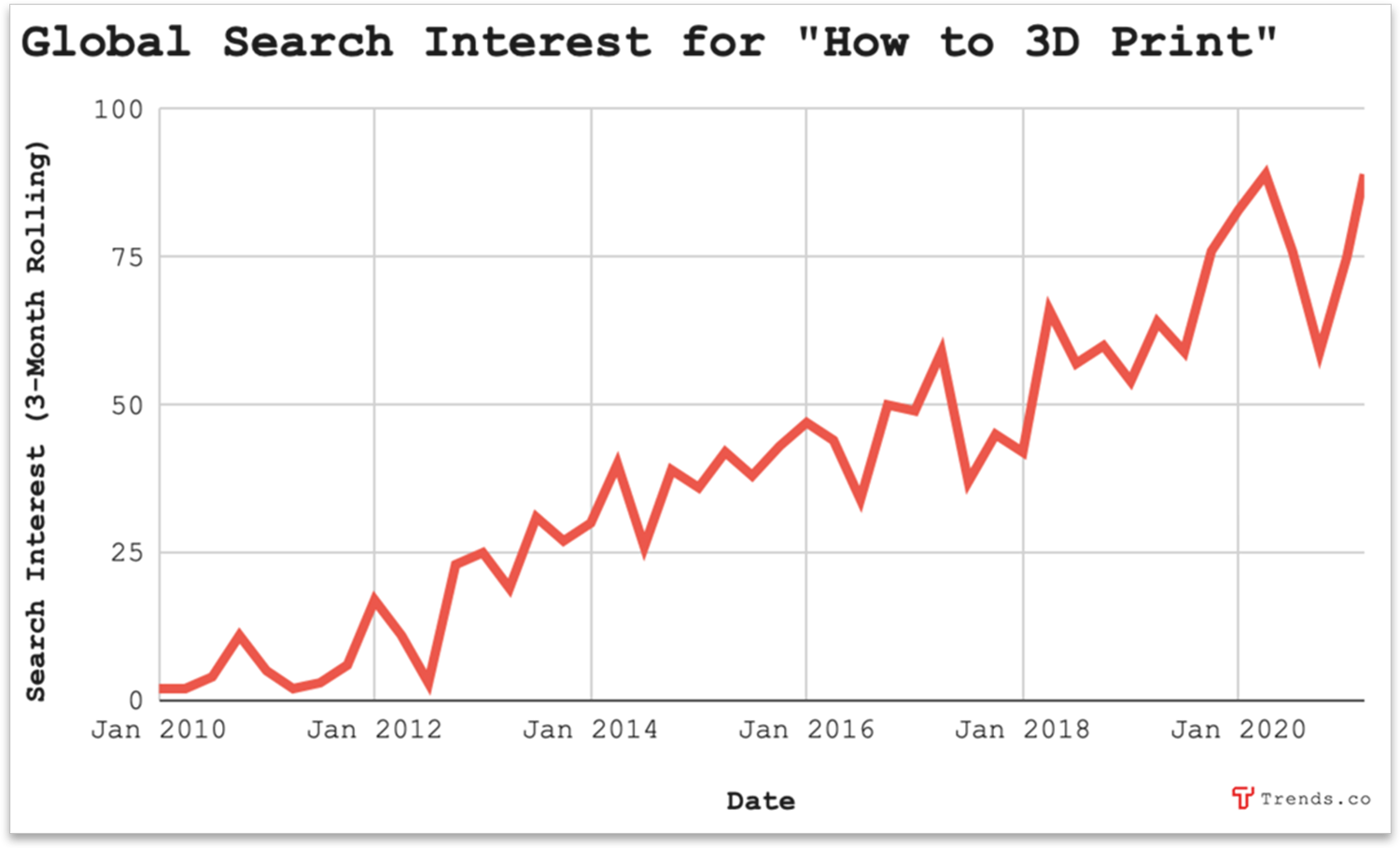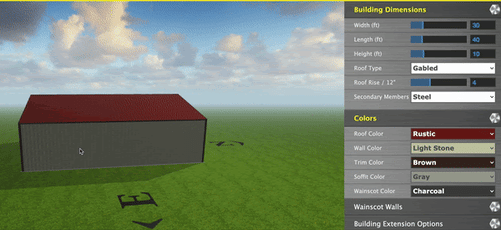nlopchantamang.com
3D Printing in a COVID-Impacted World
Amy McMillen

Source: Crunchbase
The Signal: Futurist Bryan Alexander told us back in May 2020 that the COVID slowdown of the global supply chain could boost technologies like 3D printing for local production and manufacturing.
He was right.
Since March 2020, nearly $1B of funding has poured into the space, per Crunchbase.
Earlier this month, AM Ventures announced a new 100m-euro fund for industrial 3D printing (a market expected to reach $350B by 2035).
The Economics: We were curious about the margins in the space, particularly with nonindustrial, consumer 3D printing.
To find out, we interviewed several Trendsters, including:
- Vince Parulan from PrintAWorld, an on-demand 3D printing company focusing on custom trophies
- Noel Tan from Little Printings, which prints biodegradable products like planters and keychains
Parulan touted 80-90% profit margins for PrintAWorld, saying that an entry-level 3D printer will only set you back $200 to $500, and filament and resin are both quite cheap, especially wholesale.
Tan also reported similar margins. For Little Printings, 1 kg of filament costs $12 to $20, which makes ~6 planters at $2-$3 each. Each planter is then priced at ~$20, bringing margins to ~90% (excluding overhead equipment and labor costs).
With costs decreasing so much in recent years, 3D printing has become much more accessible to the everyday entrepreneur.
From luxury watches to prosthetics to stop-motion films, there seem to be no limits to the technology’s potential.
We uncovered 3 opportunities in 3D printing for a COVID-impacted world, including:
Niche Manufacturing: There are billion-dollar companies you’ve never heard of that produce super specific, behind-the-scenes products.
As Trendster Michael Voulgarelis notes, “You would be amazed at the little businesses tucked away around your home, [from] plastic that goes on the outside of a deck of playing cards, or a component used by ice-skate manufacturers, or a tool only used by certain types of dentists…”
3D printing is a perfect match for such products because of increased precision and efficiency.
Examples of niche manufacturing startups:
- Lightforce Orthodontics (Total funding: $20.6m) prints tooth-moving tools, including braces, brackets, and trays.
- Additive Drives (Total funding: $1.5m) provides parts for electric motors like single coils for racing cars or e-bikes, increasing production speed and performance of up to 45%.
- Conflux Technology (backed by AM Ventures) produces heat exchangers for thermal management, with applications in aerospace, automotive, oil and gas, and chemical industries.

Other niches ripe for disruption are random household parts like the plastic shelves or water filters in your fridge. These pieces of plastic can retail for $90+.
In addition to selling directly to individuals, there’s opportunity in setting up systems with property managers or large apartment complexes.
Trendster Kirstin Russ, a commercial remediation expert, suggests creating an app for household appliances. Residents or property managers could scan the model number to obtain a database of parts, and then see where you could obtain a cheaper model through 3D printing.
Instead of needing to pay ~$70 for a dishwasher basket, 3D printing one would cost ~$2-$3 of filament.

Tabletop Miniatures: Miniatures (minis) for tabletop and role player games (RPG) is an industry that has skyrocketed in recent years.
Jungle Scout data shows that this Dungeons and Dragons dragon figure makes $225k/mo on Amazon, while this set of fangs and talons minis makes $55k+/mo.
One opportunity is to allow for individuals to custom design, 3D print, and paint their own figurines. Subreddits in this space are blowing up:
- r/MiniPainting (316k+ subscribers): Ideas and techniques for painting and converting miniatures
- r/DnDIY (70k+): DIY projects for tabletop RPGs
- r/PrintedMinis (55k+): 3D printing miniatures for tabletop games

Entrepreneurs could create peer-to-peer marketplaces for custom designs and prints, even going super niche for certain games.
One platform where you can create and buy customized minis is Hero Forge, which gets 2.5m+ page views/mo. Ahrefs estimates that the site has amassed an impressive $16m worth of organic search traffic, while its referring domains have tripled over the last 3 years.

Other 3D creators are starting to follow suit. For $10/mo on Patreon, Titan-Forge will send you printable 3D files for RPG, board, and tabletop games you can print yourself. Titan-Forge has 7k+ patrons, raking in a cool $840k/yr.
Subscriptions are a good match with this audience due to the extremely loyal fan base, according to Trendster Kyle Vamvouris, who used to run a top tabletop game website. “It becomes more [of a] culture than just having fun,” Vamvouris says.
Other subscriptions that would work well for these hobbyists include finishing materials for the 3D minis, including paints, sandpaper, primers, and varnish.
Education, Community, and Support: The accessibility of 3D printers has given rise to the everyday learner and hobbyist. Nearly 3k people search “how to 3D print” per month, according to Keywords Everywhere.

There’s an opportunity here to create cohort-based courses that take students from 0 to 1 (“3D printing for beginners” gets 1.6k searches/mo, per Keywords Everywhere). You could even create themes based on what people are interested in creating (e.g., miniatures, candles, architecture models, etc.).
This beginner’s guide on YouTube has 1.2m+ views, while Udemy’s 3D printing classes have 156k+ total learners, meaning there’s a market to elevate the learning experience.
A subscription service or community where people can ask for guidance and support could also take off. Subreddit r/fixmyprint, where people give each other help on 3D print problems, has 56k+ subscribers, climbing 4x in the last year.


Leave a Comment